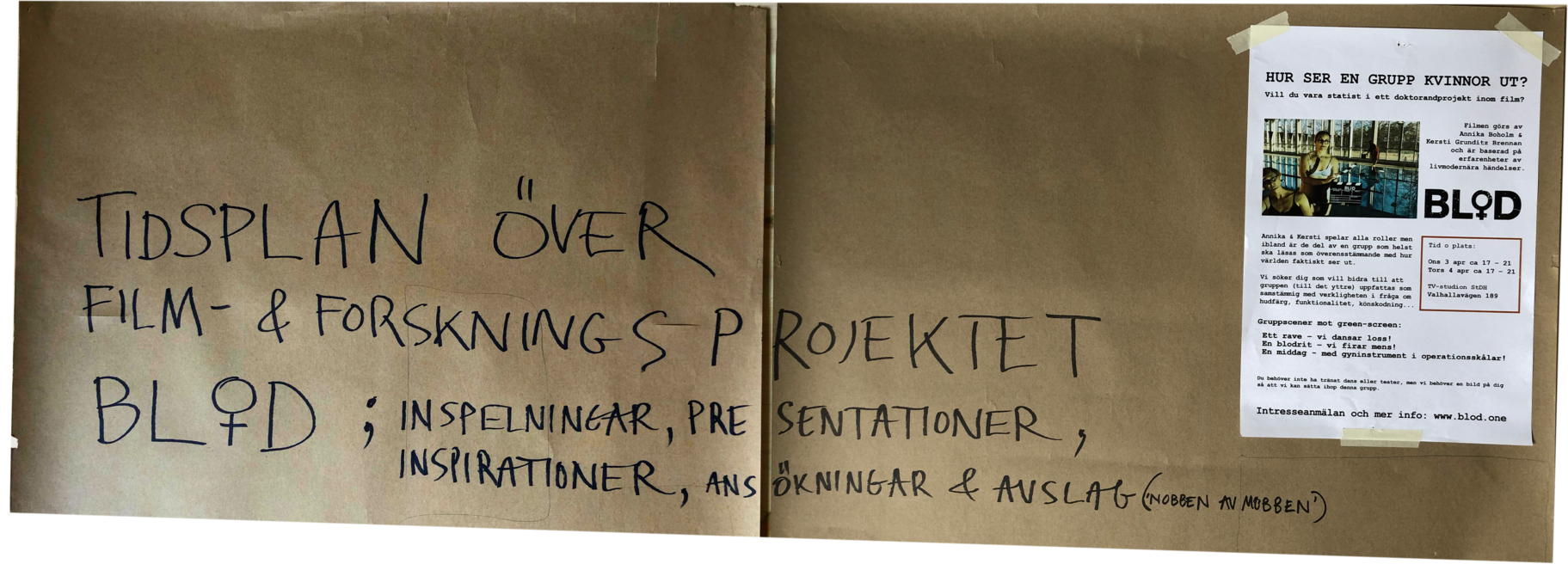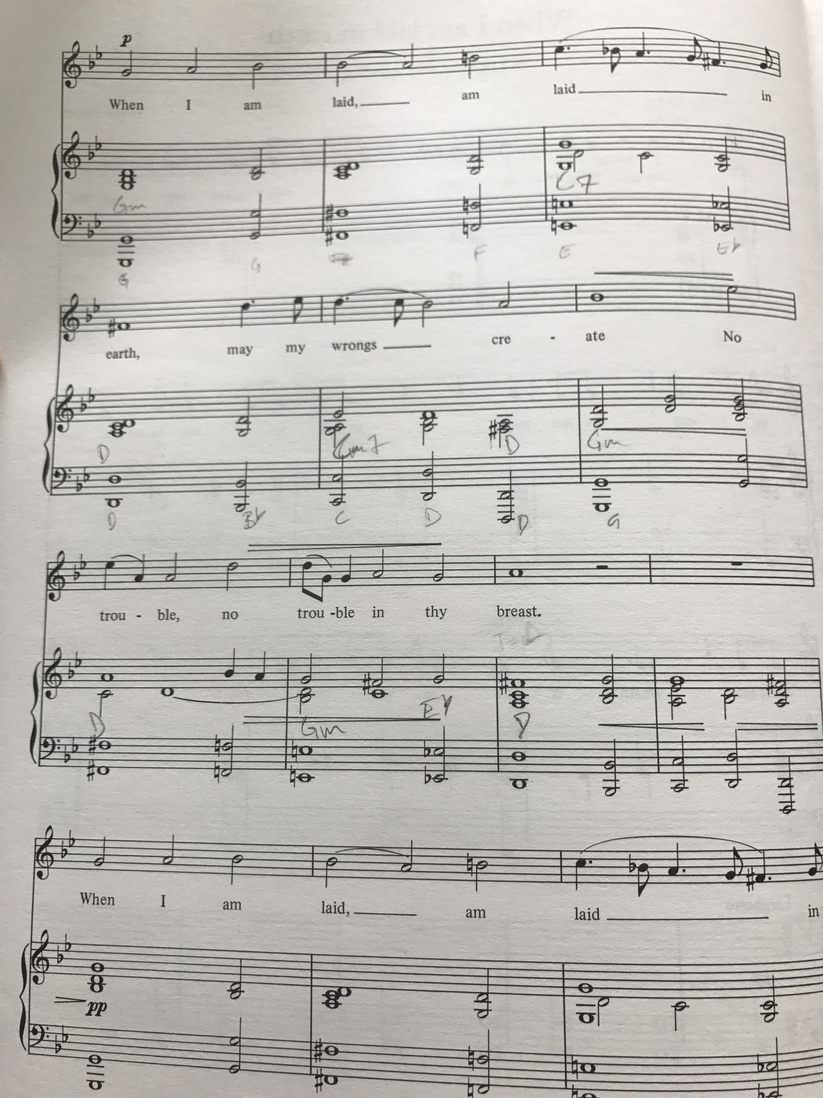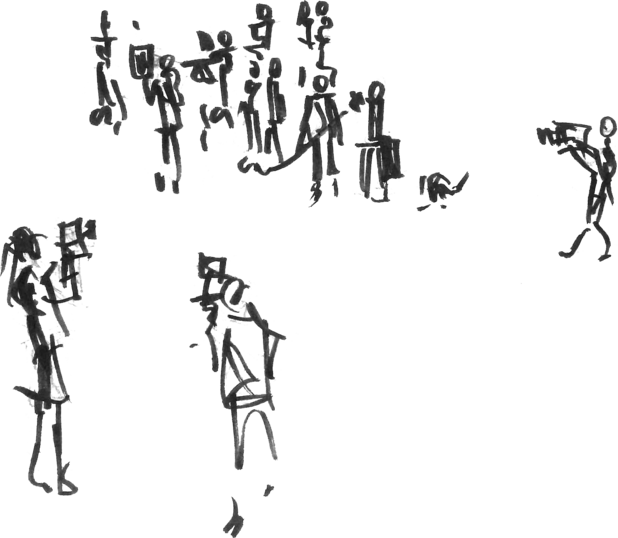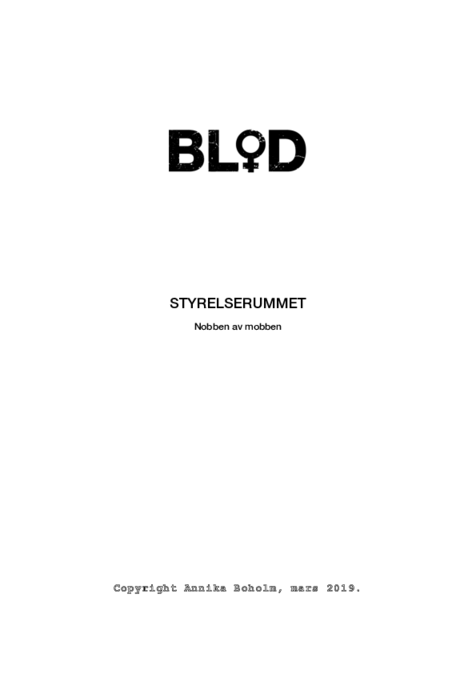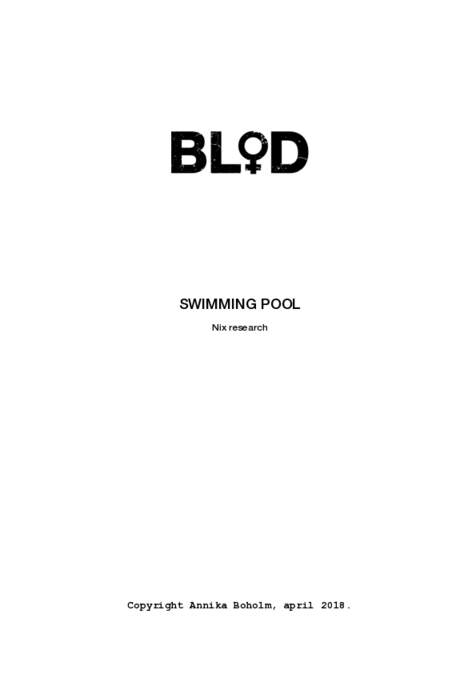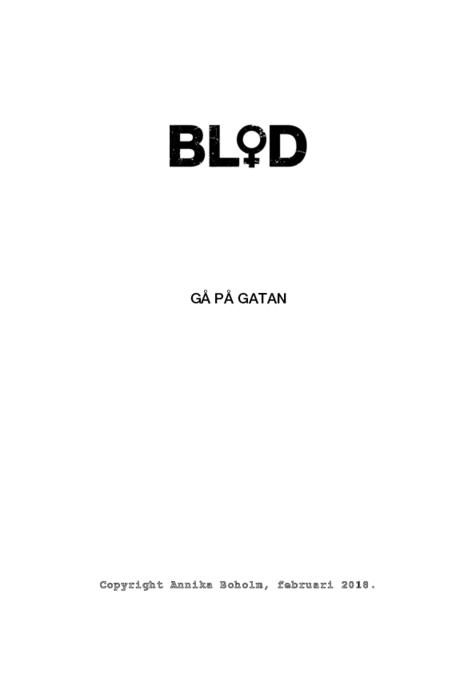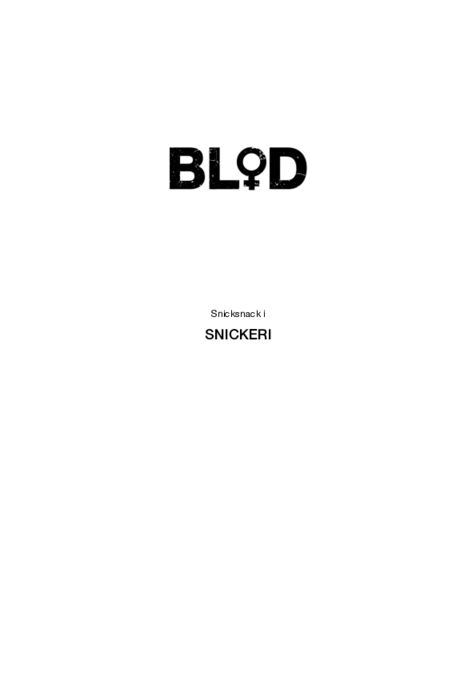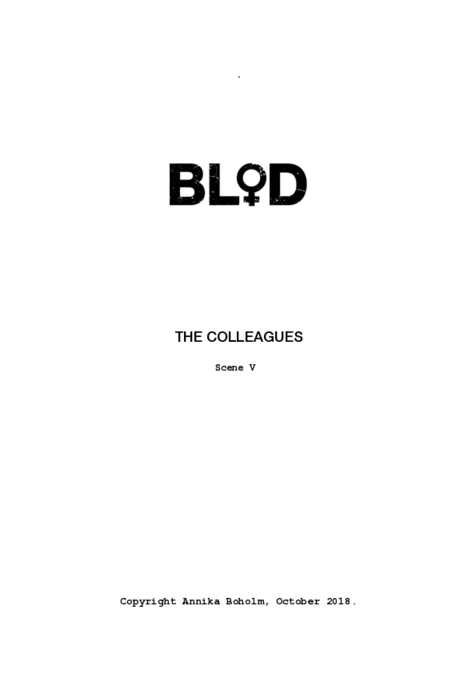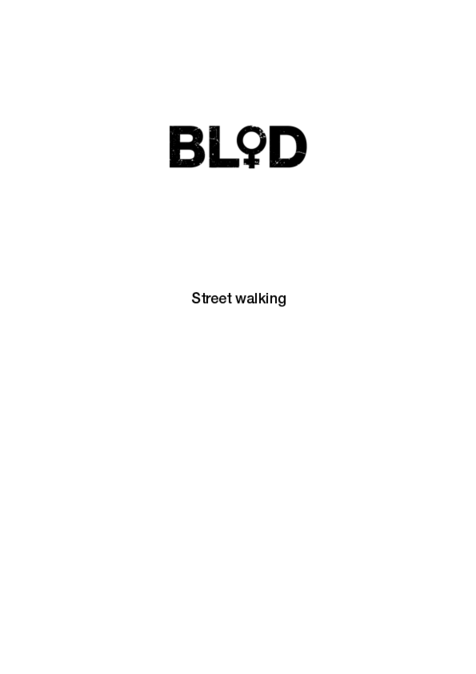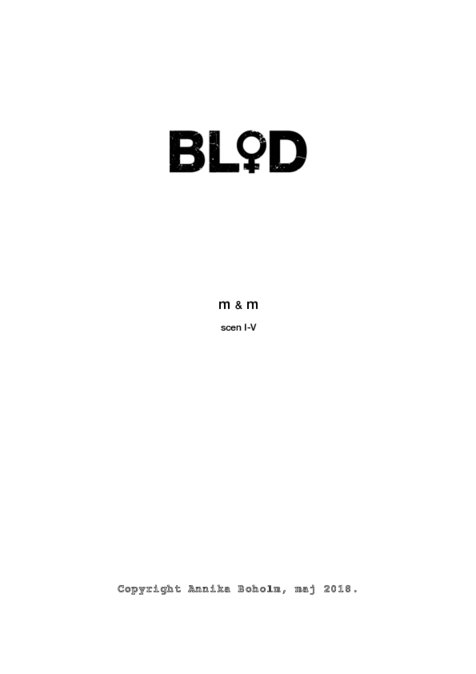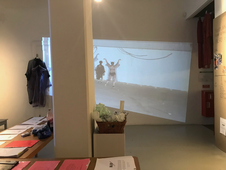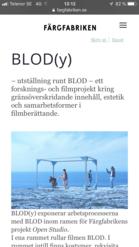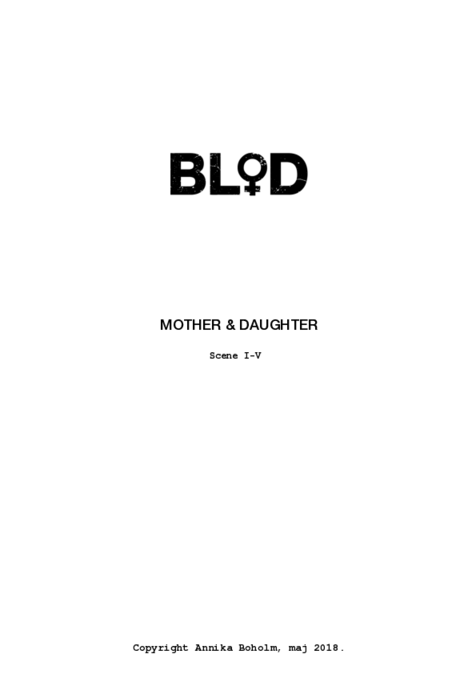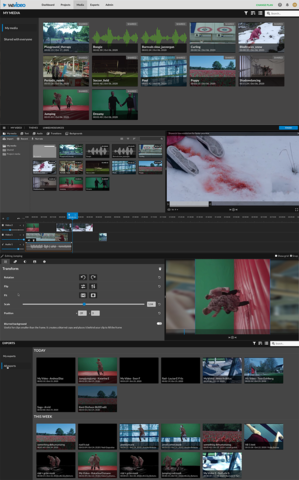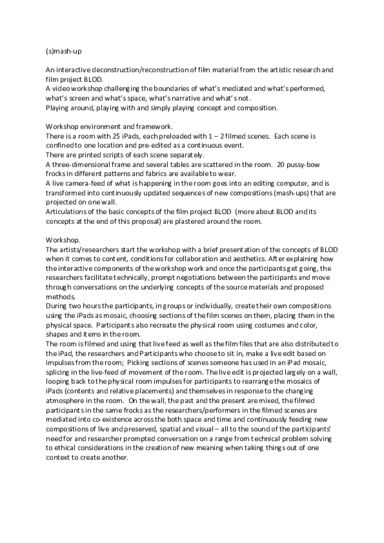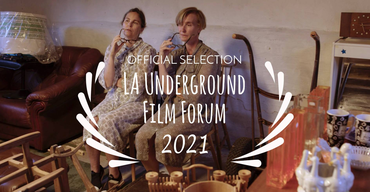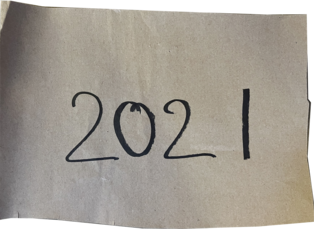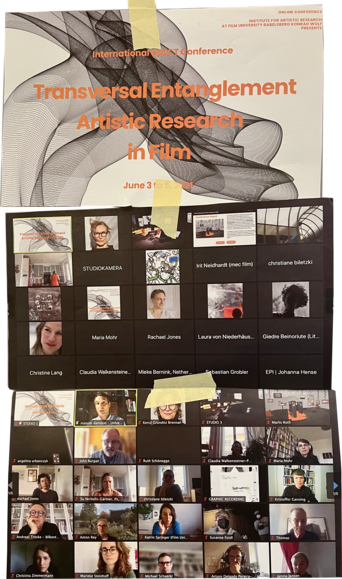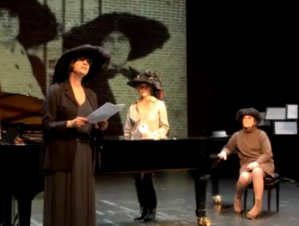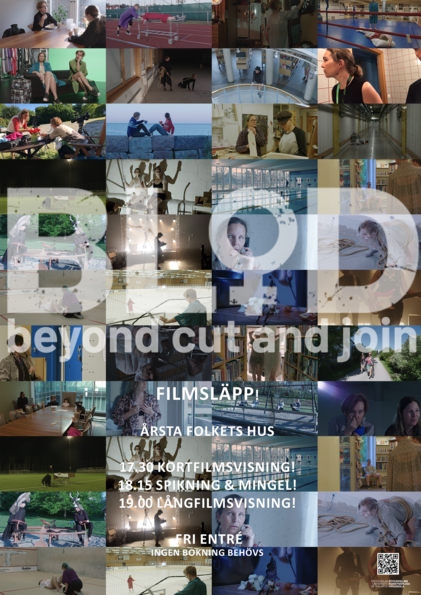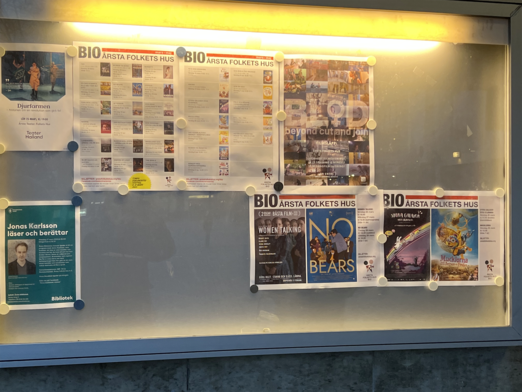THANK YOU!
Aksel Ekblom
Ann-Britt Rönnell, SU
Anna & Per Steen
DIF Djurgården Boxning
Danderyds Tennisklubb
Erica Odell
Fritidsförvaltningen Danderyd
Gustavsbergs bibliotek
Gärdets Squashhall
Göran Lindeman, Wasakronan
Insitutionen för film och media
Mats Jörholt m. personal
Kent & Anki Grönström
Lilla Akademin
Loppis-Ingvar Olsson
Lotta Millde Luthander
Louise Scheja
Max Edqvist
Mihra Lindblom
Nils Pahlbäck
Pernilla Lesse, Färgfabriken
Roland Kristiansson
Stocksunds IF
Tove Loheman
Ulf Friberg
ÅVC Hemse
Works cited in the film material
Didos klagan - Henry Purcell
Fragment 114- Sappho
Monday Morning - Trad.
Viljen I - Trad.
sound mix
gaffer
color grading
ADR
animal heads/costume loans
carpenter
add. music recording
costume loans
production assistants
translation/subtitling
Klas Dykhoff
Lars-Göran 'Labbe' Nygren
Tom Brennan CSI
Carolina Jinde
Ewa Wallin
Göran Wendel
Magnus Andersson Lagerqvist
Nils Harning
Arvid Friberg
Charlotte Markelund
Johan Pahlbäck
Ruth Pahlbäck
Sven Friberg
BTI
extras
Annika Whittembury
Beatrice Pourbagher Garcia
Chloé de Buyl-Pisco
Debhora Vega
Desirée Olame Bayibsa
Diana Harbia Lundberg
Eli Bø
Emmanuelle Guichet
Hainan Zeng
Hanna Åhs
Lena Kempe
Meryam Dogan
Robin Bukhamseen
Sanna Ansgård
Yasmine Seifi
--- Cinematic
image as reinterpretation, moving
image as restructuring of present and
past, combination of image and
sound – sites, words and
actions – as reconstruction
and reframing of perceived
reality and events
...
-- Storytelling
weaving, pulsating,
multiplicitious, reflexive,
intersecting storylines, spiral
progression, revisiting...
BLOD - the film
produced by
Migma Film AB
with artistic research funds from
Stockholm University of the Arts
with support from
Filmpool Jämtland
producers
Anita Oxburgh
Annika Boholm
Kersti G. Brennan
© 2019 Migma Film AB, Annika Boholm & Kersti G. Brennan
Kersti:
I was picking up my sewing machine from a repair shop which is on the same block as The Greasy Spoon brunch restaurant. Getting out of my car I had both establishments in my view, visually connecting the restaurant where I had the first meeting with my now secondary research supervisor Karen Pearlman the one time she was in Sweden and the now repaired sewing machine I made the costumes with for BLOD.
Crossing the street I drew an actual spatial connection between sewing and talking about my research. To include the sewing of costumes for BLOD in the research had been a way for me to embody the characters that would wear them. Since Annika and I play all the parts and she was writing the dialogue, I saw the sewing as my opportunity to approach and inhabit the characters through a hands-on creative act before actually playing them in film scenes. Deciding to do it, I had thought less about all the time I would spend cutting and sewing. The slowness of it. The forced reflection through another medium. A blank page between louder voices in the film making process.
In both the physical exhibition of processes that we did at the art gallery Färgfabriken and in this digital exposition, the costumes take up a lot of space. They hung all around the exhibit room and images and films of them as objects fill a large portion of this website. I have had plans to write a lot about the costumes to justify their omnipresence, but it keeps slipping lower down on the list of priorities. And maybe that is because there is no explanation needed. The time and effort spent making them correlates with the amount of space they occupy in rooms and digital expositions and that presence is how to convey their importance in the project.
Annika:
Dislocating story events from their natural habitat is a gesture to create new meaning, and perhaps say something about life and society by the twisted operation of a familiar space. The dislocated filming sites are chosen for their potential to performatively engage with the sites’ specificities – its inhabitants, nuances, weather, etc. This immediate exposition of the research and its processes continuously loop back into the project and the practice of dislocation generates reflection and critical dialogue.
The conversation with three sincerely curious male squash players after we filmed a scene about a young girl’s first visit to the midwife on one court while regular games were played on the others, caused not only blushing cheeks but a serious conversation about film, art, culture and life. Their genuine enthusiasm for the project – and its themes – and their desire to discuss is with us, had everything to do with the event taking place at a site where they felt safe. We talked about that for a long time, Kersti and me.
BLOD – a site for research on transboundary content, collaboration and aesthetics in cinematic storytelling
This practice based research makes its outcomes reproducible via the mediums of its artistic practice
- making the process of creating visible as part of stories in the films themselves,
making the connections and interactions of the research's building blocks;
ideas, places, materials, people, time, experiences, technologies;
felt through the design of the exposition.
Research actively looking through
a feminine lense
– cyclic, spiraling, 'rhizomatic',
kaleidoscopic, layered –
in states of FEMMES:
Breaching one’s FOLD by grabbing its bottom,
turning inside out.
Continuously returning to Daddy Lacan’s claim; again (encore) is the world’s most EROTIC word.
In Swedish: igen och igen.
Affording MONSTERS shocking light of day
– unleashing inner creative beasts.
Attempting to rewire and relearn – repetition as
the MOMMY of learning.
Listening to ECHOES of (feminine) experiences reverberating through time and space.
Obsessively picking at SCARS of
life and story.
Annika:
based on my embodied knowledges and experiences as a dancer and choreographer i want to explore:
how can a text – a scenic score – be written so that, when put into use, it invites bodily experience and triggers moments when impulse and influence merge and ignite sparks in mind and body.
thus: how to organize linguistic expressions that activate physical sensations, mobilize memories and stored knowledge; how in writing arouse impulses to be applied with body and movement; form text that is re-created when it is interpreted by its user through speech and sceneries – handlings and situations
nb 1. my experiences of dancing and choreographing are that they are utterly different practices. (as are writing and talking.)
nb 2. notions of body, bodies, embodied include but are not limited to humans'
i'm exploring a writing that triggers exploratory performative processes; how one can write (for scene and screen) out of and with bodily experiences rather than about what is experienced. so that, by giving room for new / other knowledges, already existing experiences can be transformed and (re)created as movements and / or dialogue. these processes include both my own writing processes and processes in which my text might be used
taking from my experiences of dance practice, improvisation is a core component. improvisation – from Latin’s improvisus: the unpredictable of the unforeseen – the subtle pas de deux of sense and
fancy. which presupposes a fusion between what i already know but yet don’t know that i know. perhaps revealing facets of lived experiences not previously evident
often a boundary is set between composition – something that can be repeated – and
improvisation – something that occurs in the moment and only lives while it's going on.
but i want to investigate the partnership of those temporal entities – spatially and temporally.
examine ‘where’ in the user the text is placed so that the interpretive understanding becomes
immediate in the scenic situation; and ‘when’ text functions so that the past (composition), the
present (improvisation) and the future (the process/practice/work) become one and the same
nb 3. even though improvisation manifests in the ongoing, in my understanding it consists of many different temporalities and intra-actions
i imagine these processes like spiral movements; out of my bodily experience, text is formed that can possess its users – exert influence – and inspire the user to improvise on basis of their own
bodily knowledges. in this way, embodied experience lives in the improvisation and through
improvisation what not yet exists becomes embodied. by writing the embodied, new meaning in old events can be discovered. and through that arrive at a text that spurs physical enactment of the complexity in each (performed) moment’s inherent risk and unpredictability
Kersti:
We talked about our many experiences from hospital stays – near death, the uterus in the center. How alien our bodies were to us and how odd we were in the hospital environment. In the middle of a game, cast as totally powerless pieces. Where were the artistic expressions that portrayed those experiences? And how could they be portrayed without becoming exploitative or repelling?
Content ----
blood, sex, loss and death,
birth and rebirth, recurring
states, fear and laughter,
visceral sympathy,
longing, physical
alignment...
Collaboration --
rehearsing, replacing,
diversifying, transgressing,
responding, caring, challenging,
non-compromising...
Annika:
Here comes some kind of a story. It’s true.
In a crispy greenery a few years ago at Hedvig Eleonora cemetery. Kersti Grunditz Brennan – from here on referd to as KGB – and I sit on a park bench. We are talking about our mothers. About ourselves as mothers. Kersti is what we in Sweden call top barrels furious. Not just at her mom. A comprehensive work has crashed because someone in a crucial function did not do their job. As I sense her frustration, it’s outermost about vulnerability. About being at the mercy of someone else's negligence. And then sit with the responsibility of the other's lap in one’s lap. But it doesn’t look like rage and frustration only, I also sense despair. As merciless jaws have merged and locked in desire and creativity.
The story ends with KGB shouting: Annika, I'll never make a movie again! O’gnarly. There I sit like a charlie. We get hungry and have some grub. After a few pieces of sushi, I grow up and start groping. Mumbles about a movie, about moments of life & death - when one becomes aware that the body belongs to mother nature, who does whatever the fuck she wants; a film examining a bleeding body. That starts bleeding. Stops bleeding. One night bleeds and bleeds until life nearly abandons it. A film about the animal experience of having a uterus. To be the story yourself. Loneliness. The farce. Nausea. A visual poem with a loop of events opening and intervening with one another. A film dealing with life’s finiteness, hovering between the abyss and the trivial, moves in the tension between pain and laughter. Associative and condensed. Surrealistic and poetic. Wildly shifting style and tone. Both dreamlike and concrete. A film that challenges traditional dramaturgy and creates a kaleidoscopic image-telling. The film should be boundless, hurt, ruthless and funny. Suddenly KGB shouts: Let’s make that movie! When we finally meet again, we haven’t seen each other in nine months. In the joint between winter and spring we meet at the same hole in the wall on Sibyllegatan:
KGB:
Annika that movie, it’s time to make it. I have a suggestion.
ANNIKA:
Kersti…
KGB:
If you become a co-researcher on my PhD project, write the script and –
ANNIKA:
I need to tell you something...
Long silence. Cuttlery continues rattling, people around them mumbles, scrolls, queues.
KGB:
(Raises eyebrows – what…?)
ANNIKA:
I have cancer. An aggressive tumor is growing in my womb.
Five days later, the uterus et ultra is gone. One week after the surgery, we, Kersti G. Brennan and I, start planning. Wise or mad from experiences we will take care of it all. The two of us are the whole team. One of us writes the script, the other edits, the rest of the A-functions we share; sewing costumes and making dolls, finding locations and creating stage- and light design, playing all the roles (17 for KGB, 19 for Annika), cinematography, composing and performing the music, creating animations and graphic design. + WE WRITE A MANIFESTO: 10 rules challenging us to keep the obstinate; being our compass when the starry sky rotates. When we struggle with organizing our bouquets of knowledges; when forging connections across the many different arrangements of the trying and the doing – as well as the know-how; and above all attempting to transcend disciplinary boundaries altogether.
Annika:
i create because i wish other worlds. and i want to learn something, change by what i do.
*
i'm extremely interested in creative processes. based on embodied knowledge, how to create a work of art through a creative process where it's integral to the work that my artistic attitude meets the outside world and society.
Kersti:
2020 is a strange year to release a film from the edit room. Part of me want to submit BLOD to festivals but something feels off about sending it into this cybervacuum of an online festival. One of the things I value with festivals is the meetings with audience, even sitting in the theater, breathing with others through the 90 very familiar minutes. It makes me see the work differently. Sitting there with a untangleable mix of pain and pleasure, shame and pride, fingers itching to perform impromptu re-edits.
Kersti:
It's hard not to compromise for efficency and accord. It's also hard to deal with the gnawing aftermath of sesessions yielded in the compromise.
Not compromising means enduring discomfort, but in that friction sparks may ignite. What this project has taught me so far is how much I like fire.
Kersti:
Storytelling is at the core of my filmmaking practice. Telling stories using images and sounds of people doing things, saying things, being places and using images and sounds of places and spaces.
The storytelling at the core of the filmmaking practice goes beyond making the story of the film as I use storytelling to make sense of both the story and the story making in an endless meta loop fed by my own experiences and imagination - things I’ve done, gossip I’ve heard, films I’ve seen, books I’ve read. Everything I remember melded to one reservoir of food for creating stories out of thousands of choices of images and sounds of people doing things, saying things, places and spaces.
The story emerges between the storyteller and the recipient, in story worlds that are amalgamations of a myriad traces of experiences – of memory, fantasy, other stories. Telling stories, hearing (reading, watching) stories, making things up, remembering… I think of storytelling as a means to both hide and reveal truths and sometimes it is in the intricate fabulation of a complex lie that something unbelievable is what makes the most sense.
Annika:
This project has intra-acted with several severe political situations, including but not limited to: a wounded Tellus, a pandemic, an increased right-wing extremism and xenophobia in Europe, the 45th president of the United States, the 4th of Russia’s.
The horror of millions and millions human beings investing their belief in erratic men who dispute evidence-based experiences. Sounds familiar?
An authoritarian but moody patriarch?
Ourself? An immature rest of the brat throwing the pet bottle over her shoulder?
Someone who I do not have to feel inferior to?
Whose way of speaking I comprehend?
Whose clout I acknowledge?
Whose manners I recognize?
With recognition as a standard for measurement: familiar is good, alien is bad. BLOD wants to mess with the unified expression but not necessarily broadcast that intent. But it’s not only about multi-vocal – not one or the other, but a
third echoing in between voices.
Kersti:
Editing for me has to do with connection and interaction.
Working with the BLOD material is a process of refining - by going back to the material, excavating and re-excavating.
annika:
The BLOD method is a method of reuse and repetition – subtle performative recycling; exploring actions and situations, like bodily processes – breath, heartbeats, bowel movements – that keep us alive while driving us towards death. With this kind of – simultaneously life-giving and destructive – premises I explore the fuel of creativity: the doing and the attempting. Paying attention to bodies’ importance in creating meaning; a practice that also involves bodily aspects when working with power structures, risk taking, responsibility, limits. It is a fundamental attitude to what creation is about, just like the words point to, ethics in interaction with artistic exploration.
I want to write scripts that allow for theatricality, engender a kinesthetic reading, and invite scenic displacements and temporal shifts, while simultaneously foregrounding the materiality of the text and the embodiment of concepts. Aiming to reveal the material’s inherent fragilities and instabilities, my work is based on creative documentary strategies in a porous overlap of fiction and reality. Weaving the components into each other while still maintaining a space for the unknown. Weaving hybrids by giving attention to vulnerability and tenderness of bodies. Complicating the role of the protagonist through listening, acknowledging, decentering.
All my work begins and ends with relations. Human as well as more-than-human. To me, writing is ground research on what it means to be a temporal and finite being. Every creature’s existence will come to an end. How do we deal with that?
Annika:
In November 2019 BLOD the feature premiered. The night before I couldn’t sleep.
What does it mean that we live? that we die? that things end?
Tossing and turning I fathom This is what I do; I create shelters, I practice dying.
The research project BLOD is a home.
By home I mean: a relation-building well-tempered hangout, or: I’m looking for metamorphose.
I am in there, and I am not in there. Also, I am not not in there.
When I write I, I also write you.
‘I’ write ‘you’ and ‘I’ mean all my lovers, all my cats, all my children.
When ‘I’ write lovers, cats, children ‘I’ probably mean relations, society, transformation.
Home in Old English is ham, of Germanic origin; related to Dutch heem and German Heim.
When what is known and familiar returns as strange and foreign it arrives unheimlich –
one feels at home believing one is safe, and suddenly: strangeness in the ordinary.
During the years of work with BLOD there have been questions:
Whose research is it? Who has done what? Why chorus?
Even if I have felt BLOD being a home – for acumen, for breeding, for community –
if there are heads thinking I do not belong, there will be tension.
Creating unhomely moments.
Whose house is this? Whose night keeps out the light in here?
Say who owns this house? It is not mine. I had another sweeter…
The House is strange. Its shadows lie. Say, tell me, why does its lock fit my key?
(Toni Morrison)
Annika:
To create dynamic collectives, it's crucial to be aware of the risk of implementing a tyranny of harmony where friction and tension is banned from the processes. A fundamental component for robust descion-making, is a process that also encourages dissent and disagreement, as long as there is an agreed structure for cooperatively resolving conflicts with respect and creativity.
Kersti:
In the 20 years of my career in film, especially as an editor, I’ve often had a sense that my contributions were somehow invisible. And because they were, I have wanted to point them out. But I have started to sense that my quest to elevate the role of editing and render the editor more visible, is based on a false premise. Maybe it is not the editing or the editors that are invisible, but the collective nature of film making; too often obscured by the brands of directors or stars used for film marketing. Maybe it’s not the skewed distribution of individual artistic credit that is the issue, but the idea that the creative process could be neatly separated by preassigned professional roles and credit distributed accordingly.
Of course I recognize the deep specialization of individual skills and practices and the unique perspectives that different members of the film making collective bring to the process. It’s the once-the-film-is-finished extrapolation of who contributed exactly what, that seems like a construction to appease a need for individual point scoring.
Annika:
I try to take on matters I don’t really know what to think of. I'm drawn to situations in which human relations are absurd, banal, crabby, dark (etc.). And through the dramatic situation figure out situations, relations, handlings, conflicts on a deeper level.
Trying to capture dimensions of life or reality, I often find it in the concentration that re-telling offers. In other words: by using the archive of my own body when writing, I discover fresh meanings in familiar events.
My writing in BLOD is not autobiographic in the way one might think of as autobiographic. Having said that, I recycle experiences gained from my own life, mixing with others', reusing earlier writing, rotating the so-called reality turning it into fiction.
While seriously transforming the shadows of losses into artistic expressions – and doing so on its own terms – the BLOD project explores a kaleidoscopic cinematic story telling that challenges expectations of realism/naturalism that the film medium traditionally invites.
Annika:
The first sensation of BLOD appeared as an image of a bled-out woman in a hospital bed on an empty soccerfield. Together with a wish to forge a film with a kaleidoscopic dramaturgy.
A film will be fixed. A kaleidoscope creates new patterns and images again and again and again. But still, there is a kaleidoscopic effect created by BLOD’s structure returning to themes and stories that are constantly reshaping; the change created by one occurring before the other and then being transformed again by another order. The audience co-creation of the film bringing their past experiences, filling the gaps, could be considered the hand turning the kaleidoscope. A film experience is not just a product but an experience over time. Remaining in the minds of the viewers, shifting, reshaping and changing with time.
Wikipedia tells me the word is derived from the Ancient Greek words: καλός (kalos) beautiful, beauty; εἶδος (eidos) that which is seen: form, shape; and σκοπέω (skopeō) to look to, to examine; hence ’observation of beautiful forms’.
In most vertebrates and molluscs, the eye works by projecting images onto a photosensitive membrane. In the work with BLOD I aimed to make my irisis see the world through a different kind of reflex contractions. Because the essential was that the vision cleaved in various pupils.
The first sensation of BLOD appeared as an image of a bled-out woman in a guerney on an empty soccerfield. Together with a wish to forge a film with a kaleidoscopic dramaturgy.
The metaphor limps. A film will be fixed. A kaleidoscope creates new patterns and images again and again and again.
But still, there is a kaleidoscopic effect created by BLOD’s structure returning to themes and stories that are constantly reshaping; the change created by one occurring before the other and then being transformed again by another order.
The audience co-creation of the film bringing their past experiences, filling the gaps, could be considered the hand turning the kaleidoscope.
A film experience is not just a product but an experience over time. Remaining in the minds of the viewers, shifting, reshaping and changing with time.
Wikipedia tells me the word is derived from the Ancient Greek words: καλός (kalos) beautiful, beauty; εἶδος (eidos) that which is seen: form, shape; and σκοπέω (skopeō) to look to, to examine; hence ’observation of beautiful forms’.
In most vertebrates and molluscs, the eye works by projecting images onto a photosensitive membrane. In the work with BLOD I aimed to make my irisis see the world through a different kind of reflex contractions. Because the essential was that the vision cleaved in various pupils.






